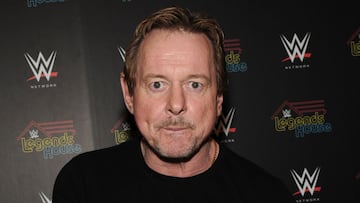WRESTLEMANIA
What happened to pro wrestling legend Roddy Piper? Life and death of the WWF legend
Remembering the most famous Canadian professional wrestler and actor, Roderick George Toombs, better known as “Rowdy” Roddy Piper.

Back in the 80s, there wasn’t much matter about the genuine quality of matches; it was all about the sensation of seeing the men with bulging ball-sized biceps smash up those cruel evildoers. Nobody was looking for a technical masterwork or a five-star classic, and the importance was the character work of each superstar. In today’s times, numerous wrestlers get by with no uniqueness because they can do a backflip. “In the good old days,” that would never have passed. These guys needed extravagant personalities to make the fans involved, and nobody did that better than “Rowdy” Roddy Piper did in WWF.
Piper’s early life
Roderick George Toombs was born in Saskatoon, Saskatchewan, on April 17, 1954, as the son of Eileen and Stanley Baird Toombs. He was raised in Winnipeg, Manitoba, and attended Windsor Park Collegiate. His father was an officer with the Canadian National Railway. After being expelled from junior high for having a switchblade in school and falling out with his father, Toombs left home. Several professional wrestlers hired him to run chores as he picked up odd jobs at nearby gyms. As a young man, he started playing the bagpipes, though he often said he was unsure exactly where he picked them up.
Professional career
Piper was an amateur wrestler before becoming a professional wrestler, and he was also awarded a black belt in Judo from Gene LeBell, hence his martial arts background. He began wrestling under the supervision of promoter Al Tomko in Canada, and his first match involved “midget wrestlers” in front of a lumberjack audience in Churchill, Manitoba.
WRESTLEMANIA:
His first official match in a recognized organization was with Larry Hennig in the American Wrestling Association. During his entrance, some of his friends played bagpipes in the background, and although he didn’t have any stage name, the announcer intuitively called him out, Roddy the Piper. The name stuck, and Roddy embraced it fully.
After hopping around the territories of North America and fighting for different NWA promotions, Piper got signed to the WWE in 1984 and was instantly cemented as a top villain. He started as a manager due to his size compared to his surrounding colleagues, but he quickly got involved.
Rowdy was exceptional in serving insults and trash-talking his opponents. He was hated by his adversaries and the fans, which brought him a lot of notoriety at the WWF company. Being the top villain on the scene played a major part in his participation at the first-ever WrestleMania event, where he teamed with Paul Orndoff to take on Hulk Hogan and Mr. T.
What made him so good is that he didn’t need to resort to low-grade tactics. He wasn’t a doormat and didn’t do any psychotic gibberish. He was just a guy with an irritating yet contagious laugh that could use his words to his advantage. His mastership to connect with the fans while making them loathe him seemed like a superpower. He was charismatic, and many superstars looked up to him, including Ronda Rousey, who named her finisher after him.
Piper’s Pit
In 1984, still newly signed for WWF, he was given his own interview feature, Piper’s Pit on Championship Wrestling and Wrestling at the Chase. These segments were so good and made Piper such a detestable lousy guy that many fans believe Piper’s Pit is the best interview show in wrestling history. It’s hard to contend that when so many memorable moments have taken place in the Pit, such as Andre the Giant grabbing Piper and launching him, Andre’s famous heel turn, which set up the WrestleMania 3 main event, and of course, Piper laying out Jimmy Snuka with a coconut. There have been many interview formats in wrestling, but none come near Piper’s Pit, and that’s why it was brought back so many times until his death.
“Rowdy” the Piper in popular culture
On July 31, 2015, Piper died at 61 at his summer residence in Hollywood, California. His death certificate cites a cardiopulmonary arrest caused by hypertension, listing a pulmonary embolism as a contributing factor. Toombs left his wife, Kitty Jo Dittrich, and four children.
Piper is considered one of the greatest talkers and heels in wrestling history. Piper’s Pit interview segments were considered innovative, especially in an atmosphere where only the people like the world champion could talk, and the wrestlers were the interviewees—never the interviewers. WWE producers said they could leave Piper in a room and return twenty minutes later with Piper doing a class-A promo.
Piper racked up dozens of film and TV credits, starring in numerous action B-movies and later doing voice work. The most famous of Piper’s acting exploits was in the 1988 science fiction film They Live, directed by John Carpenter, which spawned the catchphrase Piper came up with—” I have come here to chew bubble gum and kick ass. And I’m all out of bubble gum.”
WWE named him the greatest villain in wrestling history. American Journalist and sports historian Dave Meltzer of the Wrestling Observer Newsletter described Piper as “one of the key figures in the growth of WWF. In particular, he helped power the success of the first WrestleMania: the most important show in company history.”
At his funeral, during his eulogy, WWE CEO Vince McMahon said, “Roddy Piper was one of the most entertaining, controversial, and bombastic performers ever in WWE, beloved by millions of fans around the world.”






